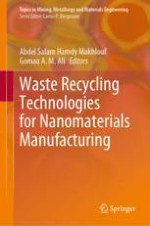2021 | OriginalPaper | Chapter
Recycling of Nanosilica from Agricultural, Electronic, and Industrial Wastes for Wastewater Treatment
Authors : Tarek A. Seaf El-Nasr, Hassanien Gomaa, Mohammed Y. Emran, Mohamed M. Motawea, Abdel-Rahman A. M. Ismail
Published in: Waste Recycling Technologies for Nanomaterials Manufacturing
Publisher: Springer International Publishing
Activate our intelligent search to find suitable subject content or patents.
Select sections of text to find matching patents with Artificial Intelligence. powered by
Select sections of text to find additional relevant content using AI-assisted search. powered by
